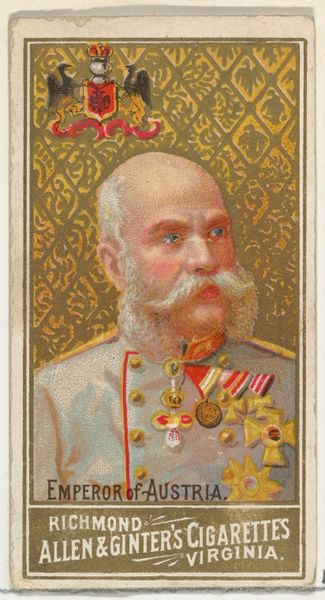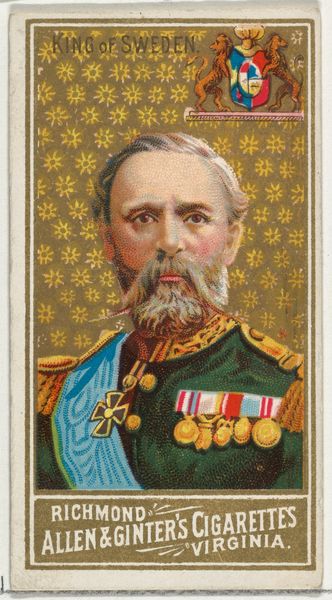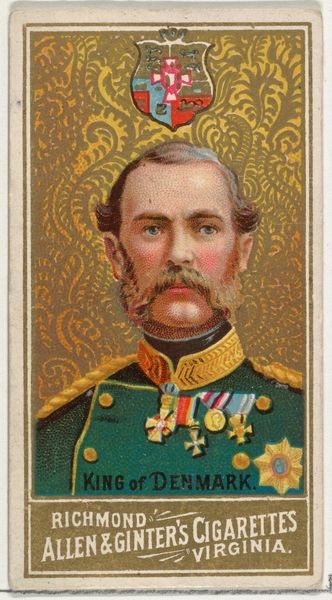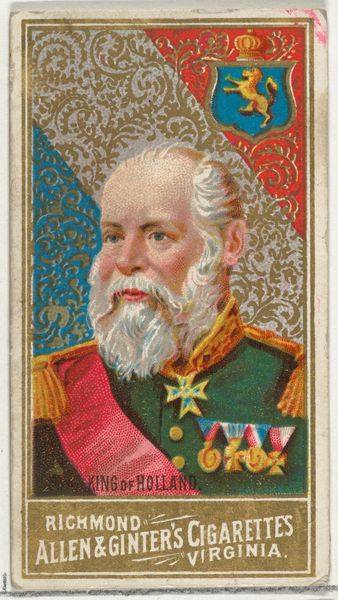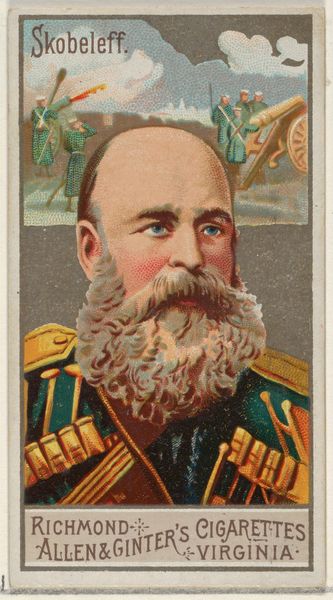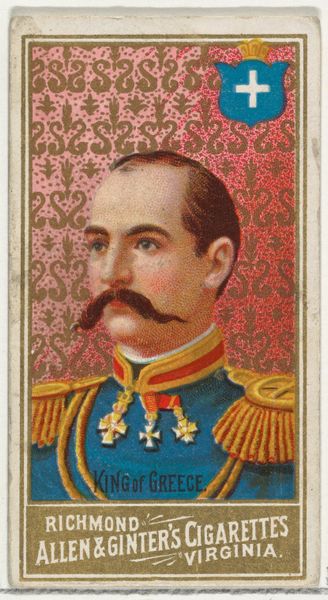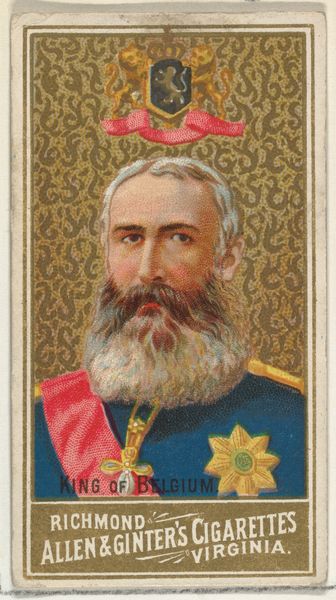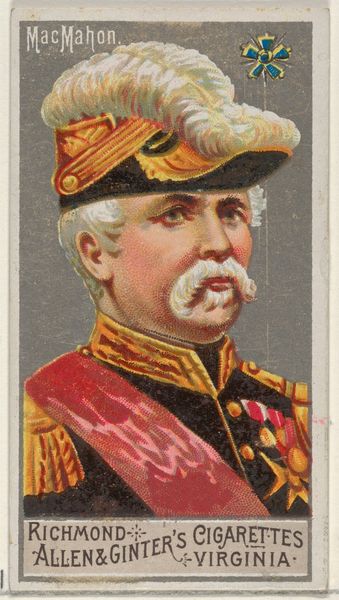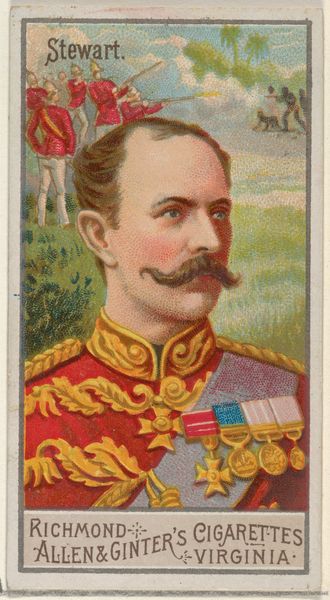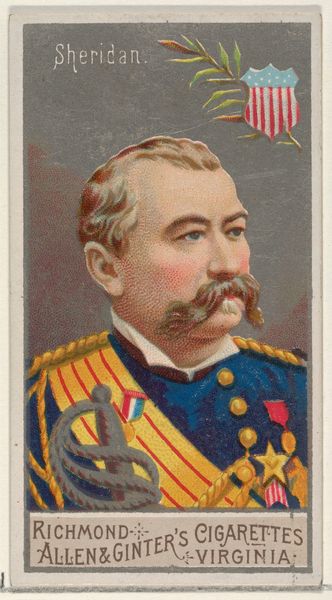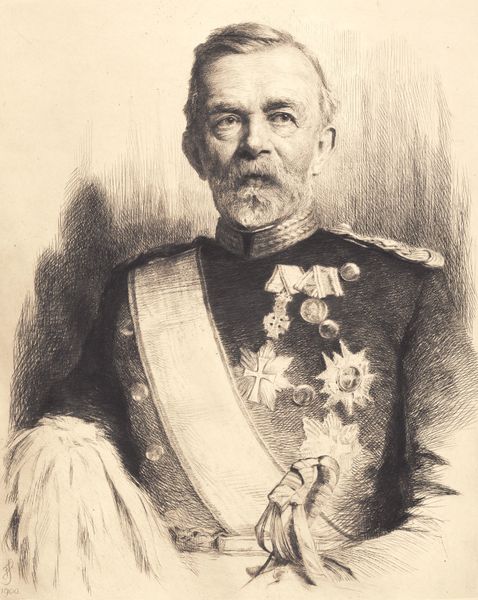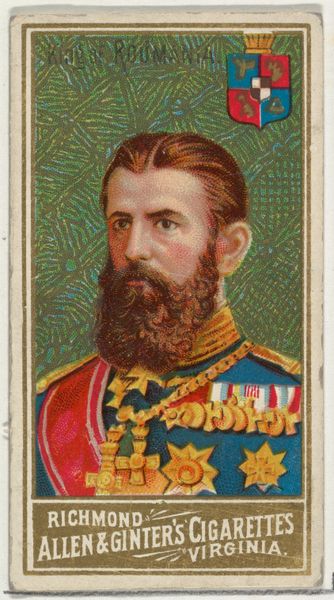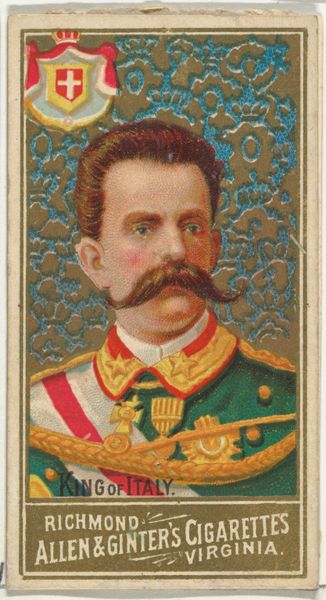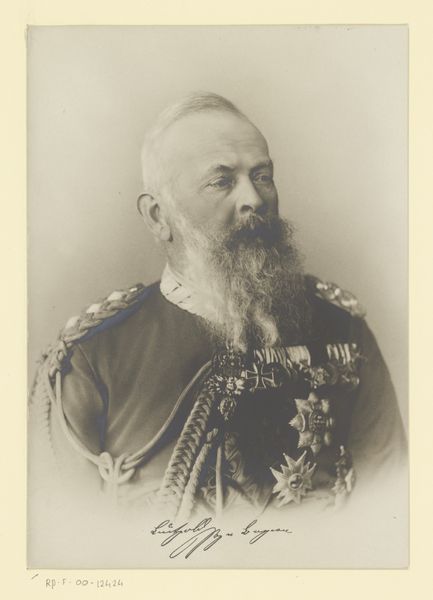
King of Saxony, from World's Sovereigns series (N34) for Allen & Ginter Cigarettes 1889
0:00
0:00
graphic-art, print
#
portrait
#
graphic-art
# print
#
caricature
#
portrait drawing
Dimensions: Sheet: 2 3/4 x 1 1/2 in. (7 x 3.8 cm)
Copyright: Public Domain
Editor: This is "King of Saxony" from the "World's Sovereigns" series by Allen & Ginter Cigarettes, dating back to 1889. It's a print, a type of graphic art. I find the caricature kind of striking, how it blends portraiture with what feels like propaganda, right? How would you interpret this work, particularly its placement within the context of late 19th-century society? Curator: It's fascinating, isn't it? This small card actually opens up a complex discussion about power, representation, and consumer culture. Think about it: a portrait of a European monarch, packaged with cigarettes, at a time of expanding American imperialism. The caricature aspect serves to both elevate and, perhaps subtly, domesticate the figure of the King. How does it feel to you considering that its audience would have been smokers? Editor: I guess it does feel different knowing that these images were circulated in such a casual way. It's less about formal admiration, and more about this everyday engagement with royalty. But it also looks like it pulls from the aesthetic of Japonisme. How does this Japanese influence further complicate the cultural message being conveyed? Curator: Exactly. The Japonisme influence speaks to a broader cultural fascination with the "Orient" and an embrace of what was perceived to be a flattened or stylized aesthetic that eschewed traditional European perspective. So, you've got this interesting tension between the "exotic" visual style and the very Western, very patriarchal figure of the King. Does this suggest to you a kind of contradictory message? Editor: Yes, absolutely. It makes me think about how images can be tools for reinforcing power structures, but also how they can be repurposed and reinterpreted across different cultures. I initially saw just a simple caricature but now there’s all this baggage of colonial history and appropriation embedded. Curator: Precisely. And that’s the power of art history—to unearth these layers and consider how images continue to shape our understanding of the world, for better or for worse. It's important to remember that this little card embodies power dynamics in ways that continue to resonate today.
Comments
No comments
Be the first to comment and join the conversation on the ultimate creative platform.
